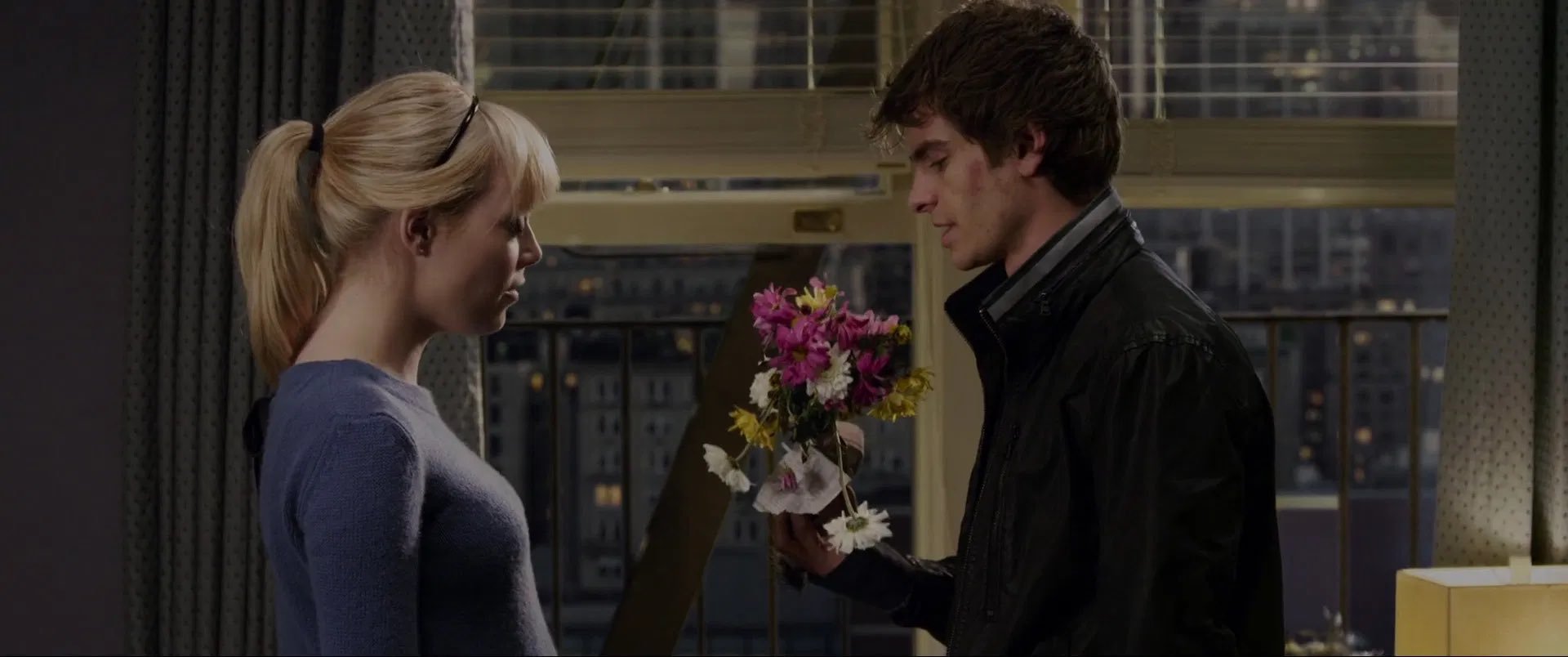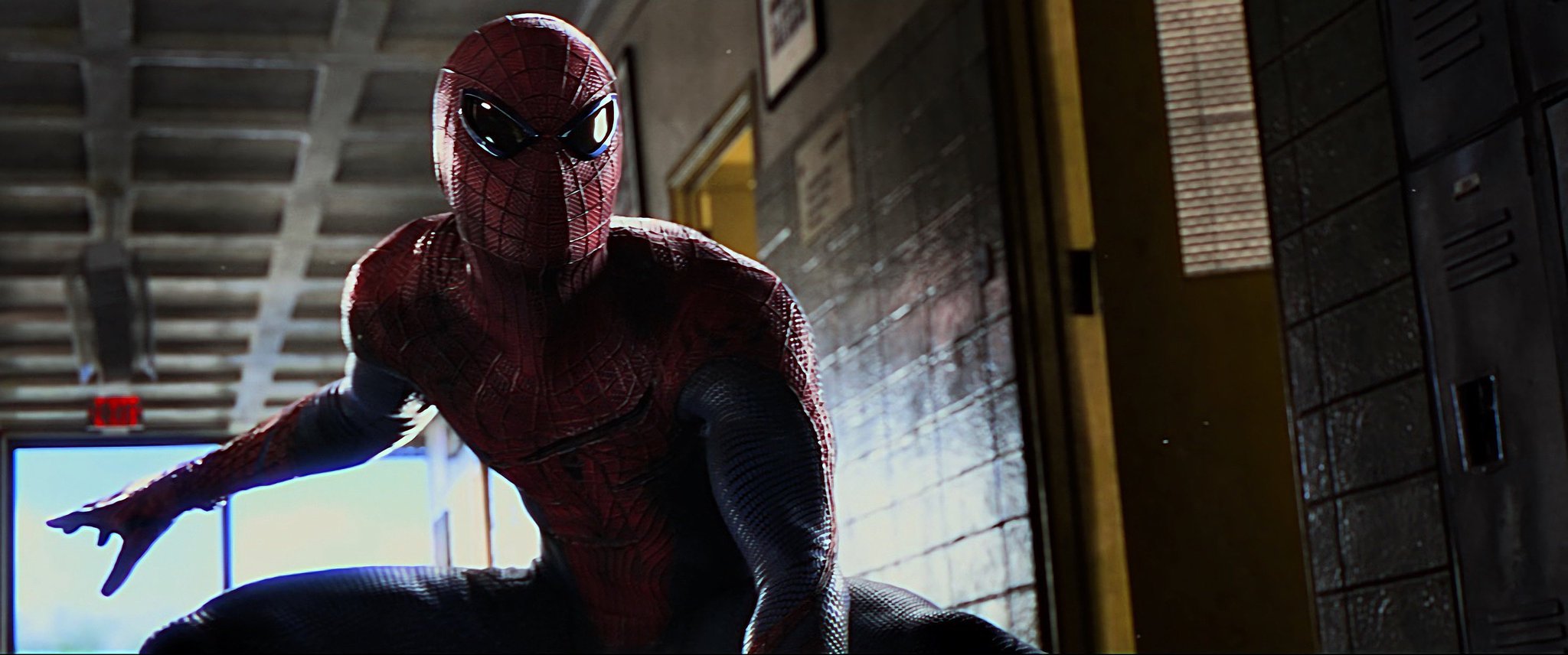'The Amazing Spider-Man': A Defensive Retrospective
It’s been 12 years now since Marc Webb’s The Amazing Spider-Man dropped into theaters and downright disrupted the then-regulated flow of superhero movies up to that point, especially in the Spider-Man swing of things. The beloved webslinger had just capped off his first trilogy with Sam Raimi’s Spider-Man 3, which debuted to a reception that was questionable enough to warrant the overhaul that led to Webb’s reimagined iteration. With the film returning to theaters this past week as the next one-up in a series of Spider-Movie re-releases, it seemed like too good an opportunity for a revisitation to pass up.
Webb wasn’t an obvious pick to most, but the webs were on the wall. Coming off his widely acclaimed drama/romance 500 Days of Summer, Webb clearly had a special knack for personal intimacy and relationship dynamics, one that, on paper, should translate well into Peter Parker’s reliable troubles and tangled web of connections. On that front, the film has always been praised.
Andrew Garfield and Emma Stone are by far and away the best on-screen love story that Spider-Man has ever seen. Where Raimi’s Peter and Mary Jane were longtime lovelorn companions and the MCU’s version of the same characters would be more immature and humorous, Webb’s leading relationship struck a balance between perfection and brokenness, compatible and impossible. Of course, as the story goes, Garfield and Stone were dating in real life at the same time as they were filming this (and the next) movie, and the chemistry is tangible.
Their infectiousness bleeds over into their other on-screen relationships too. Garfield portrays a connection with Uncle Ben (Martin Sheen) and Aunt May (Sally Field) that feels painfully realistic, whereas Gwen effortlessly pulls off her growing connection with her father (Denis Leary) in the film. The narrative goes to great lengths to tie them all together through conflicts and resolutions, too, and it makes the film’s whole web of connections feel natural and real-world.
What’s more, when both Ben and Captain Stacy pass away in succession and Peter and Gwen are forced to lean on one another to heal, their presence as a couple grows that much stronger. Marc Webb is a master of emotions and human connection, and he breathed a new kind of life into these characters that hadn’t been felt on the big screen before and, arguably, hasn’t been since.
On the other side of the coin is Dr. Curtis Connors. Rhys Ifans’ reptilian scientist, the Lizard, is easily one of the heaviest points of contention the film has long endured. He’s widely been noted as an underwhelming villain with nonsensical motives; “he just wants to turn everyone into big lizards!”, or something similar, is often the retort. Yet Connors’ story is far deeper and, ironically, far more human than that. It may be my favorite arc in the entire movie.
As Spider-Man fans will know, Connors is missing his right arm from the elbow down. He worked tirelessly on a medical solution that would not only fix his own perceived problem, but come to the aid of millions of humans who suffer similar things. Human trials were a long way off though, even with a longtime formula conundrum solved thanks to Peter’s smarts.
Faced with losing his job due to a refusal to test the medicine on other humans, Connors turns the needle on himself in the last ditch hope that it wasn’t all for nothing. He’s a desperate, long-lost man whose tragic off-screen journey comes to a psychotic head in the film. His transformation into the Lizard not only represents his going off the edge within his mind, but leads to an extreme version of his originally well-meant plan to better humankind.
He sees his new state as an improved version of what we are, what he once was. His desire to transform the entire city into the same state is simply an extension of that; in his broken consciousness, he sees the act as a favor to humanity, whether or not they agree. His eventual reconciliation with himself, as well as his clear regret shown to Peter after the antidote to his poison is spread through the sky, is satisfying and heart wrenching in equal parts.
Not only does the character make sense on paper, but his execution, thanks to both Webb’s splayed humanity and Ifans’ terrific performance, works wonders. Aside from Molina’s Doc-Ock and Dafoe’s Goblin, Ifans’ Lizard is the best comic-to-screen Spidey villain we’ve yet seen… and he comes a lot closer to matching the two aforementioned than many would confess, in my opinion.
Webb’s reach is more extensive than the emotional vulnerability that he carried over from 500 Days of Summer. If there were any doubts about his ability to direct action, or general versatility as a filmmaker in that regard, he squashed them out of the gates here. Really, his overwhelming expansion from his more contained past works into a visual palette that suits only Spider-Man is a remarkable achievement to this day.
The Amazing Spider-Man looks unreal; not only are the special effects far better than much of what we’re getting on the same scene today (the $230 million budget is used to the fullest extent), but Webb’s commitment to a brooding, blue night sky aesthetic pushes this one that much further in a different direction in comparison to Raimi’s penchant for oranges, sunsets, and stony, grounded colors. It has been said that Webb’s use of darker tones and scene settings makes things too difficult to see, but I think that’s a dull complaint. Especially when compared to the washed out grays and plain white lights of the Tom Holland trilogy (to no fault of his, of course), The Amazing Spider-Man is a miraculous sight.
When it comes to Webb’s action, he’s always finding ways to pull from the environment and situates scenes to their sets, which is something that Raimi also did brilliantly. Take, for example, the fight scene in Peter’s high school that kind of kicks off the third act. It opens on the Lizard destroying a toilet from the sewers below, crawling out of the newly-made cavern, and tearing his lab coat off in initiation of his mission to catch a spider.
He’s aware of Peter’s identity as Spider-Man at this point, so it doesn’t take long for him to locate him in the halls. As students break for the doors and out of sight, Peter rushes in the opposite direction, backpack still on, and meets the Lizard where he stands. Lockers clank and dent as Peter is thrown into them, before the fight moves to a science lab, where the Lizard (or perhaps more appropriately in this case, Dr. Connors) mixes some stray chemicals from a bygone class demonstration and turns them into what is essentially a bomb, which he throws into a hole in the wall where he’d just flung Peter moments before… though to no avail.
Peter re-emerges moments later, now fully suited up, before he returns a blow to the Lizard and the fight moves into the library. Aside from the best Stan Lee cameo in any Marvel movie ever, what follows is a continued masterclass in superhero fight choreography, structure, and writing that I could write about on end, though I’ll save you that scenario. You’ve seen the scene, anyway; even with the film’s mixed reputation (which has healed some in recent years) that one has stood out as a highlight, and for good reason. Although the action sequence before it in the sewers is equally clever, and the climactic one that comes after it on the Oscorp rooftop is perhaps even more exhilarating.
You get the point. Marc Webb was full-on swinging (wink) with the way he presented this iteration of New York and the Spider-Man specific locations within it. Raimi’s New York may still have the most depth, but Webb comes closer than he was expected to on multiple occasions; the standout among them being the crane scene. The depiction of citizens getting behind Spider-Man, putting their lives on the line just as he does, and coming together to line up the cranes and get him to OSCORP tower is utterly perfect. The news broadcasts laced between that scene, overlaid with James Horner’s obscenely underrated score, is the cherry on top.
The film may not be perfect, admittedly. Complaints about the “chosen one” origin story and missing pieces due to studio elements remain valid still, but The Amazing Spider-Man is still, in my opinion, the strongest origin the character has seen on screen, and an overall brilliant film that stands strong even now.
Even if you missed it in theaters, I’d encourage you to revisit the film in any way you can. Go back to a time when comic book movies meant more than making money. Even through the studio-induced scars, The Amazing Spider-Man is a complete vision of passionate storytelling and dazzling filmmaking that I, for one, will never let go of…






